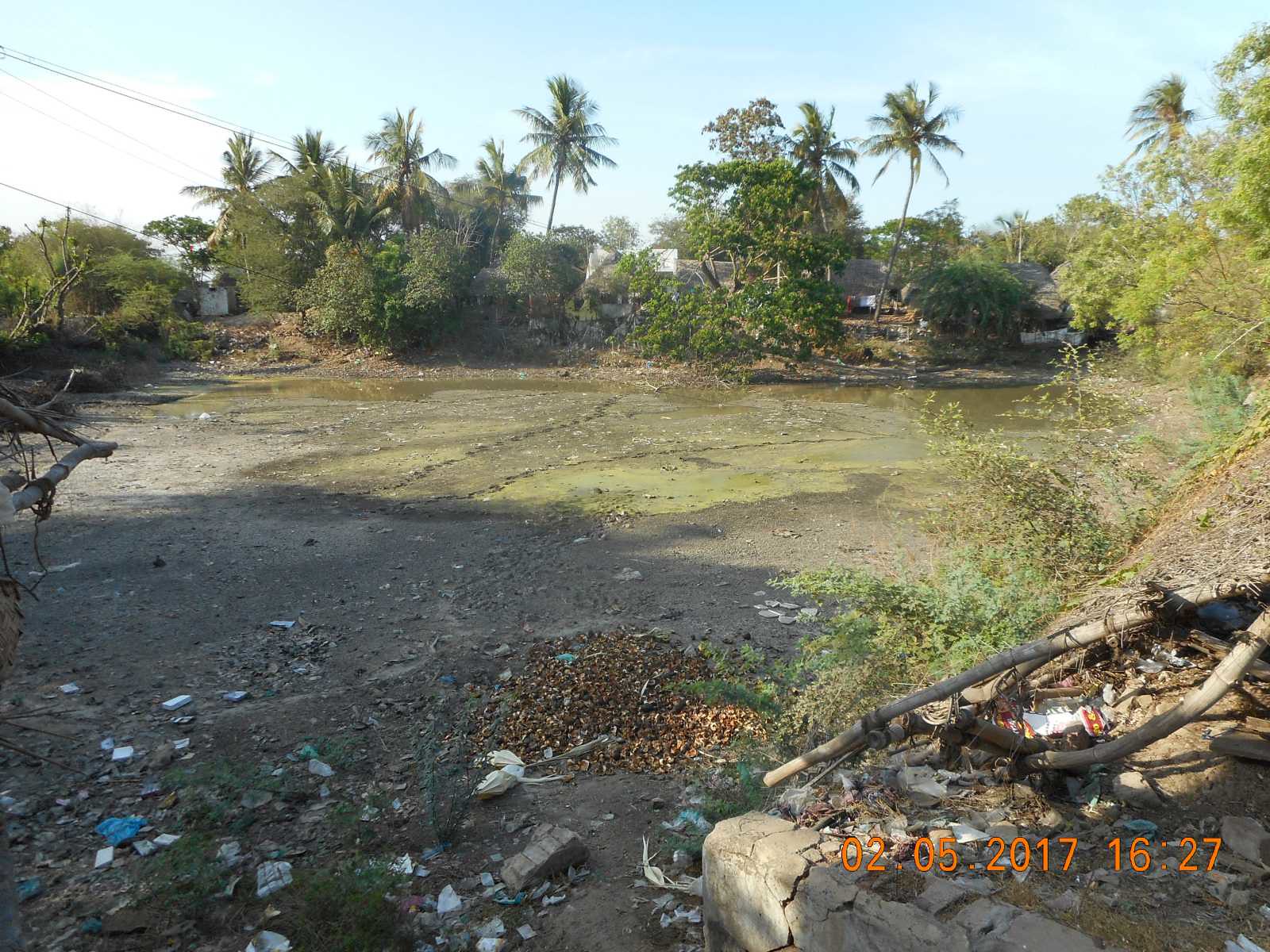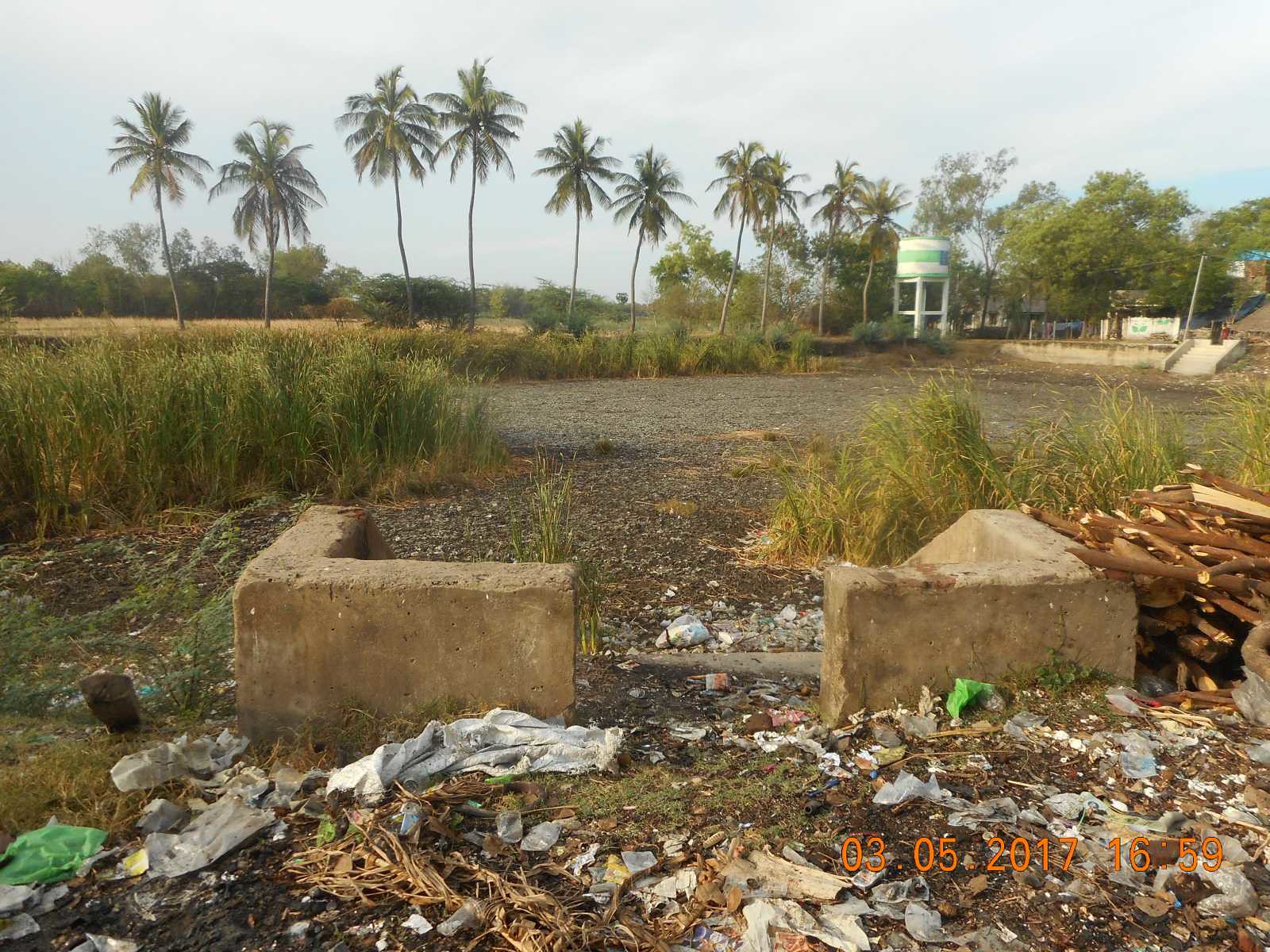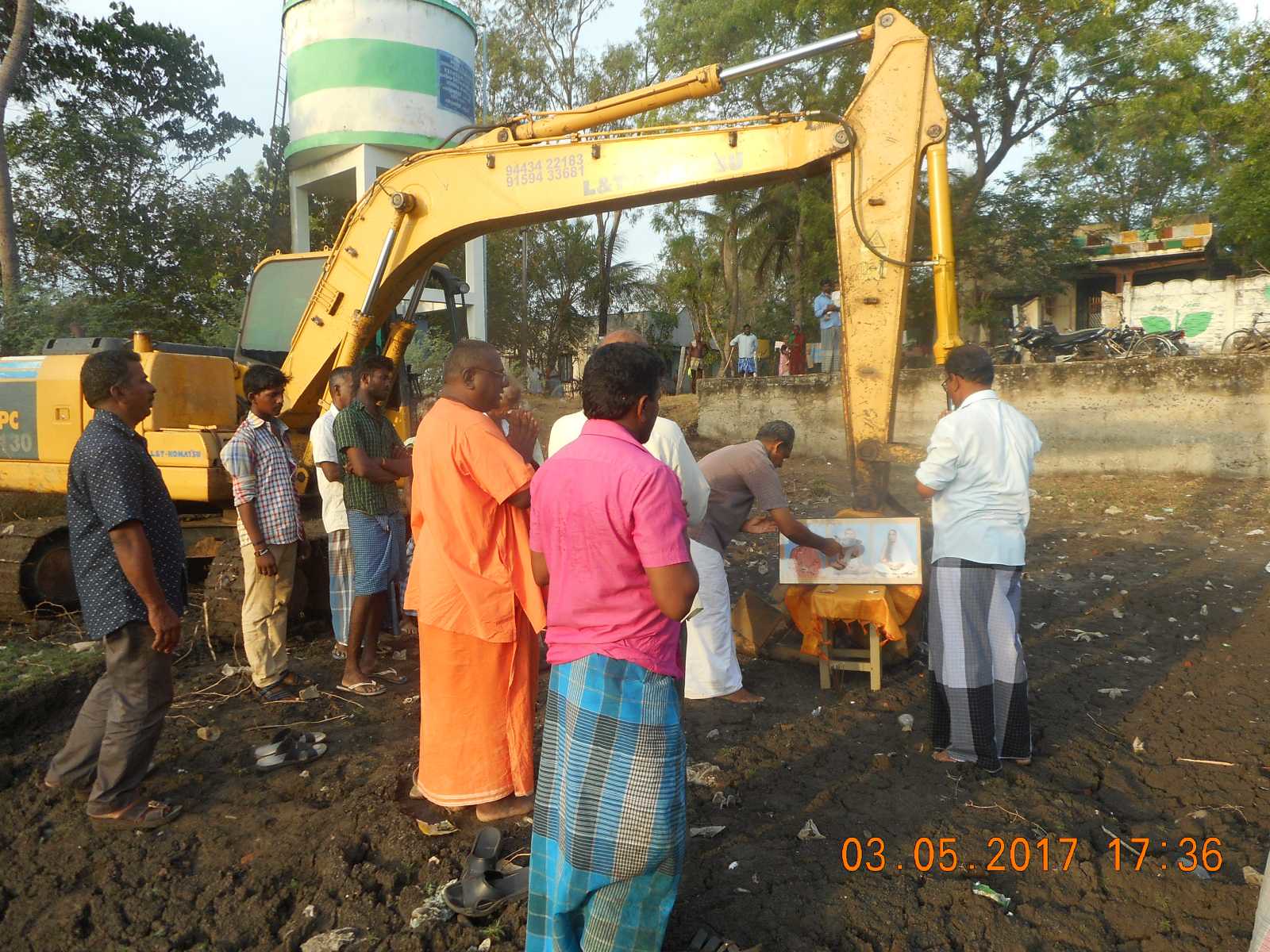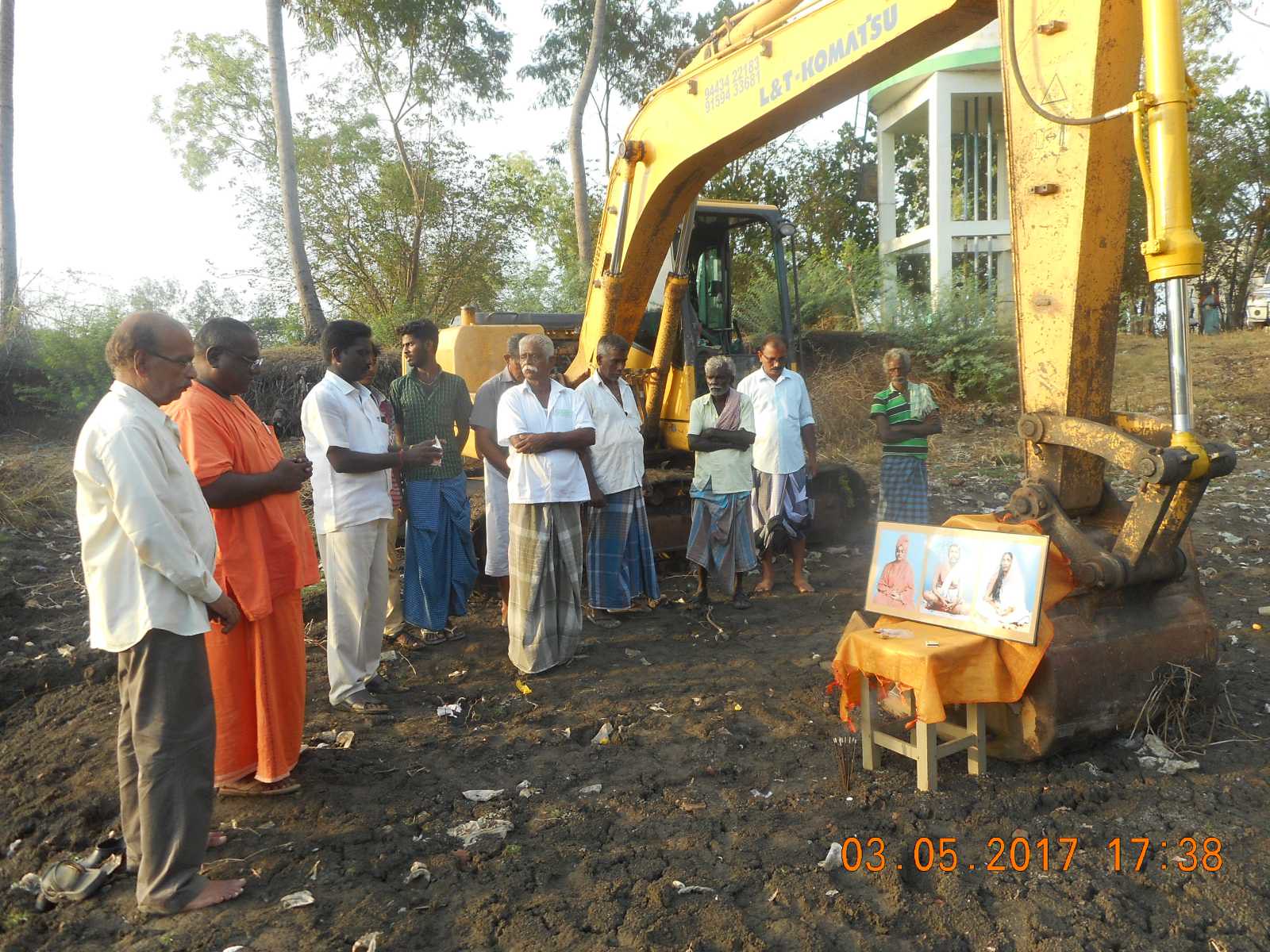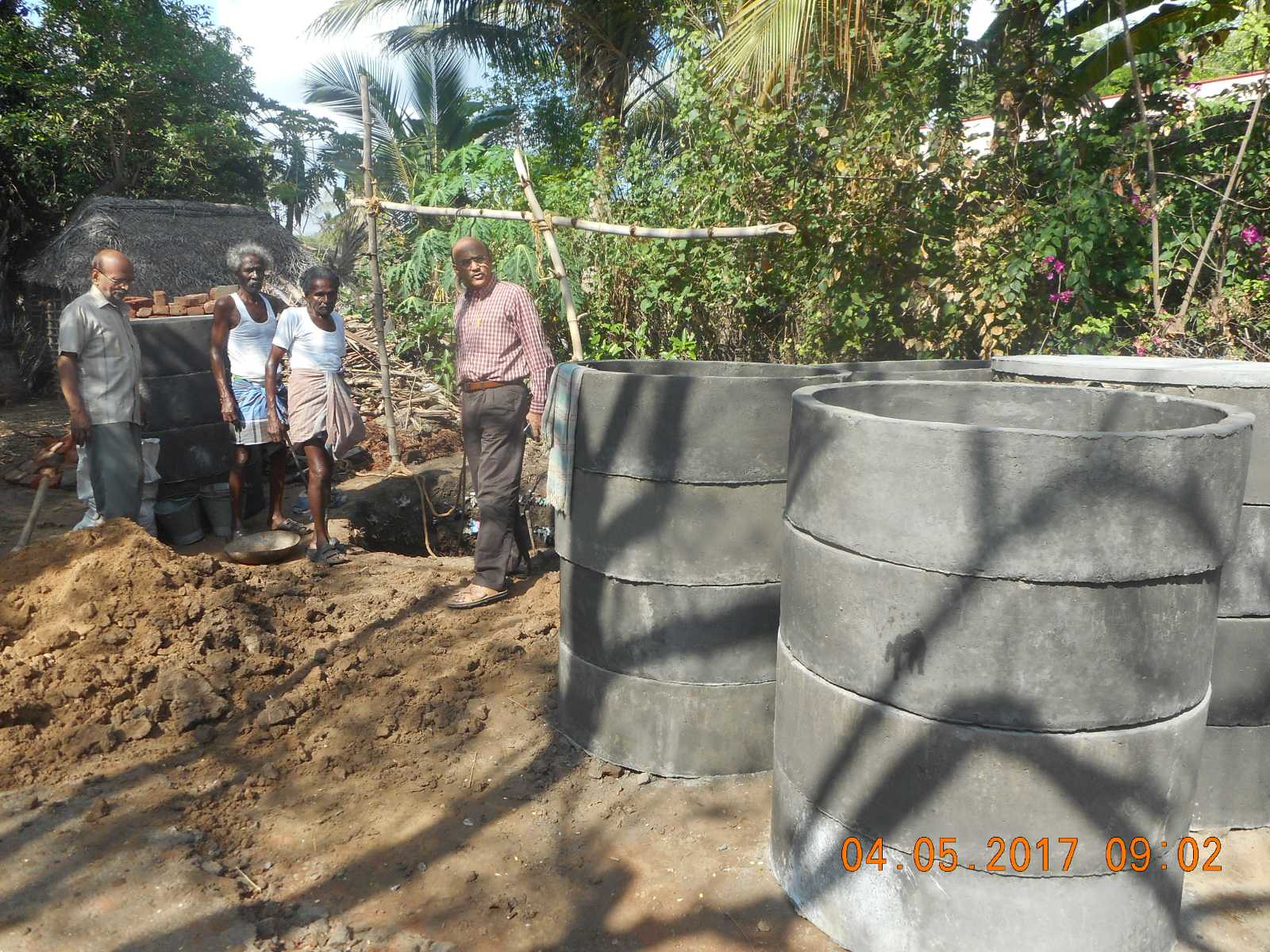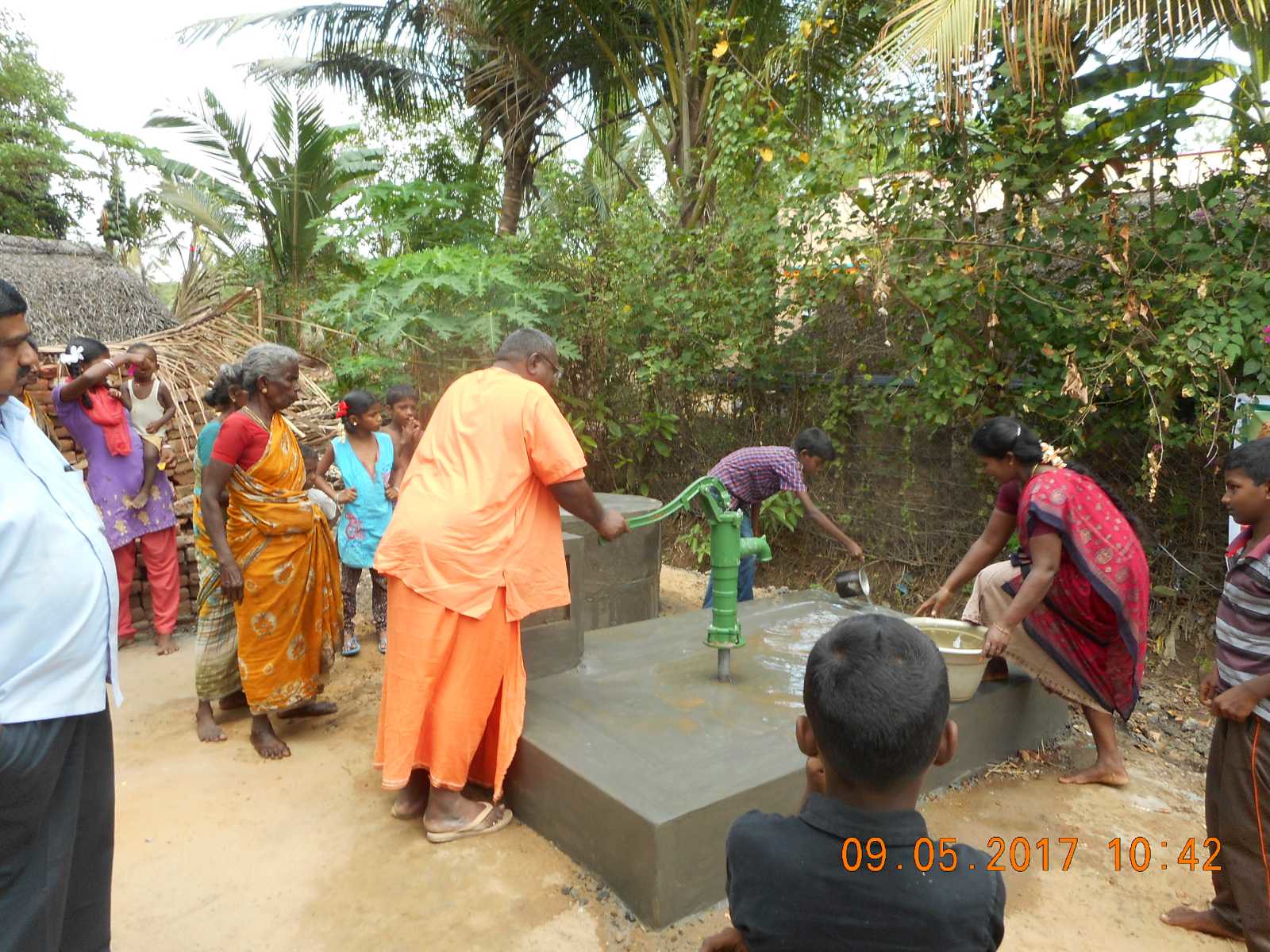Drought Relief Service in Tamil Nadu
Project Report updated on 29 May 2017
A few days back we received news that many regions of Tamil Nadu are reeling under severe water crisis due to almost total failure of rains. Failing agricultural crops and suffering cattle holdings have brought terrible sufferings to the local farmers. Drying up wells and ponds have added to the woes of poor people living in these areas. Such acute water scarcity right at the onset of summer season is a matter of grave concern.
Survey

Seeing the miserable plight of these poor and needy people, the Ramakrishna Mission Students’ Home, Chennai approached the Headquarters, at Belur Math, with an initial proposal to aid some of these drought-affected villages. It was shortly found out that though the entire State is adversely affected by water scarcity, the impact is more in the delta areas of Tanjore, Thiruvarur and Nagapattinam districts. A pilot project was undertaken in these areas to ascertain the steps that might be taken to mitigate the water crisis to the extent possible. We have identified three major operations which could vastly help the affected people – Pond-desilting, installation of Hand-drill bore-pumps and Cement-Ring-Well construction.
Pilot Project:
Under the pilot project, we have already completed the following activities:
Desilting of pond

So far, we have completed the desilting of 3 ponds (in Vadapathi, Neivilakku Kulam and Thirukulam villages in Nagapattinam district) in this area. Many ponds in these areas have silted and dried up and therefore fallen into disuse. Most of them were used as dumping grounds. We used earthmover machines to excavate the ponds and have used the excavated silt to strengthen the banks. The ponds have already started to fill up with ground water and will regain full shape in some time. Bathing ghats are also being repaired so that the local people may access the water easily. The ponds will help in raising the ground-water level of the area and will be used both for household and agricultural purpose. Nearly 1400 families living in nearby villages will be benefitted by this project.
Borewell with hand-pumps

We have excavated borewells, along with hand-pumps, in 2 villages (Vadapathi village in Nagapattinam district and Thirukaravasal colony in Thiruvarur district). The borewells are providing drinking water to around 680 people living in nearby areas. A hand-pump was installed near an existing well in Akkarai Komal village in Thiruvarur district. Earlier people had to climb on the ledge of the well to draw water using rope and bucket which was very risky. The hand-pump has made drawing of water much easier and will be used by 30 neighbouring families.
Cement-ring borewells with hand-pumps

We also undertook the excavation of 3 cement-ring borewells with hand-pumps in Mylapore, Kovilpathu and Thensari villages in Tirukkuvalai taluk in Nagapattinam district. The cement-ring borewells have a diameter of 3 feet and are 20 feet deep. These 3 borewells are providing potable water to a total of 430 households living in nearby areas. Hand-pumps are being installed over these wells to draw water.
Installing deep borewell
We are installing a deep-borewell in Kodiyalathur village. The work is in progress. The deep-borewell will be connected to a nearby overhead tank and will provide drinking water to 4 surrounding hamlets. Deep-borewell projects will be undertaken only in certain areas depending on the gravity of the situation and the feasibility of the project.
After thorough study of the pilot project report and on the basis of survey of the affected areas conducted by our monks and volunteers, we have decided to take up about 50 villages (25 villages each in Thiruvarur and Nagapattinam districts) for this Drought Rehabilitation work. The project will be undertaken in phases and will be completed in 3 or 4 months. The exact drought rehabilitation operations to be taken up in each village will be decided according to the population, gravity of water scarcity and natural conditions.

Needless to mention, the magnitude of the problem is huge, but still, it is our wish to provide an immediate yet lasting succor to as many needy families as possible with our limited resources. The total maximum expenditure of the whole project is expected to come to around Rupees One Crore. The drought rehabilitation work will be further expanded depending upon the drought situation and the availability of funds.


















